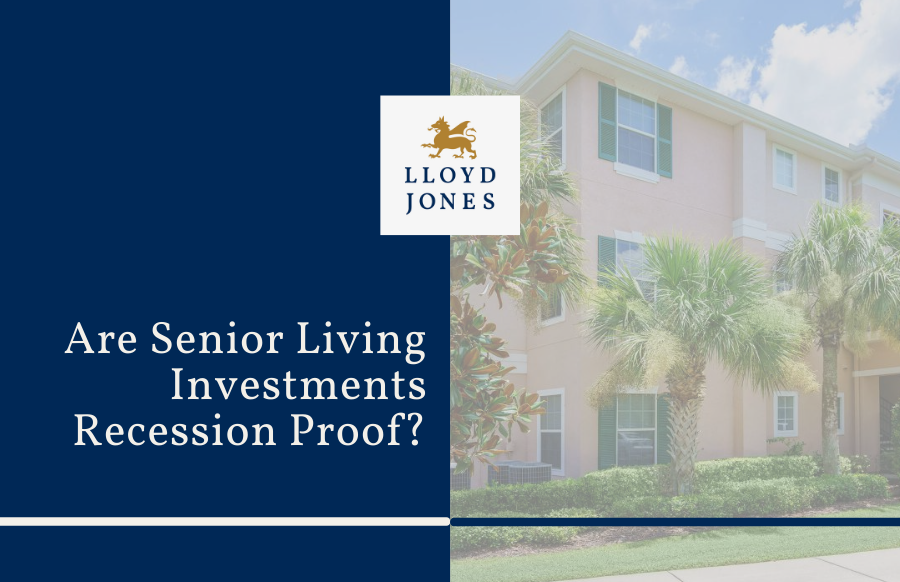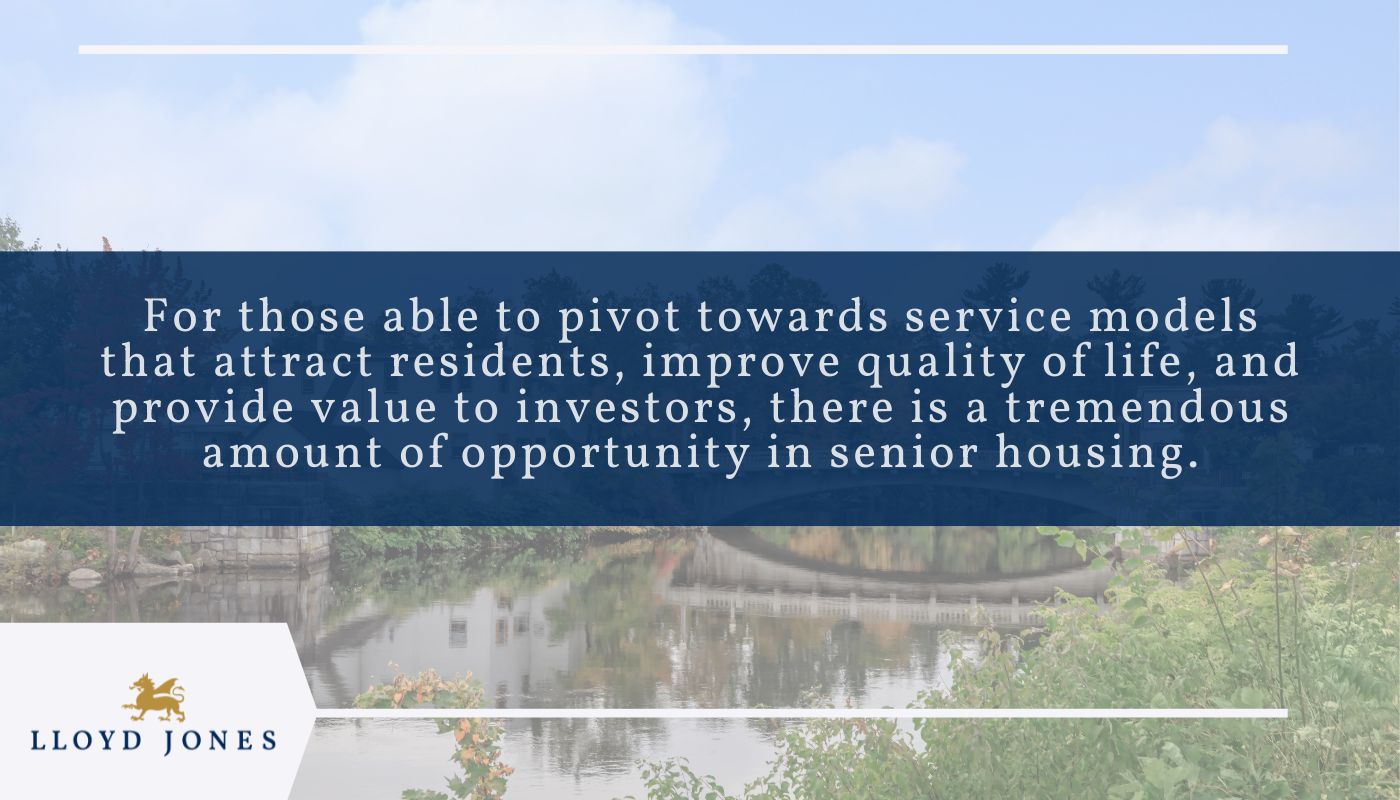
Often described as recession-proof, senior housing has had that assumption tested over the last couple of years. COVID had many people pausing their plans to relocate to senior housing at the same time that many facilities put moratoriums on new residents.
With vaccinations rising, facilities accepting new residents, and many individuals who delayed their move unable to delay it any longer, the need for senior housing will be growing in the coming months and years.
That said, the expectations of new residents will exceed what facilities have had to provide in recent decades. More than flashy amenities, senior housing providers will have to provide different levels of care and different experiences than they have historically provided.
The extension of the human lifespan, an influx of the largest generation of retirees in history, and fundamentally different consumer expectations than in the past are creating new challenges for the senior-housing industry.
For those able to pivot toward service models that attract residents, improve quality of life, and provide value to investors, there is a tremendous amount of opportunity.
The senior housing market is about to undergo a dramatic transformation. While every facility owner or operator is not ahead of the game with this transformation, they will wish they were.
This article will discuss the challenges faced by the senior housing industry, how the industry has transformed over the years, residents’ changing needs, and the strategies operators should implement to meet those needs.
Related: Designing the Future of Senior Housing
What New Challenges Does the Senior Housing Industry Face?
As more baby boomers seek senior living, residency will be at year-over-year highs for a decade-plus. More than increasing the output of current services, the senior housing industry needs to expand its offerings to create continuums of care that change with residents as they age.
This would be a challenging situation even if the industry were prepared with the appropriate number of facilities, beds, and labor to provide care, but the industry is currently lacking all three.
Owners see the improvements and CapEx that will be (and in many cases already are) required to stay competitive and simply want to sell instead of getting involved in the lengthy and challenging process of refitting facilities from top to bottom.
To summarize, there are not enough beds, not enough buildings, and many operators and owners in the industry currently want out. The entire care model needs to be reimagined to integrate facilities into a single spectrum of care that can provide residents with the varying levels of attention they need as they age.
While that may be an overwhelming prospect for current owners, it’s an unbelievable opportunity for investors. There are consistent and long-term profits to be made.
Learn how Lloyd Jones Senior Living solutions can help you optimize your senior community and improve lives.
How Has Senior Housing Changed Over the Years?
From early 20th century, private “rest homes;” to institutional, hospital-like facilities; to the rise of assisted living and private investment in the 1980s; and finally, the signing of HOPA (Housing for Older People Act) in 1995 that defines age-restricted housing, senior housing has consistently expanded its offerings and levels of care over the decades to meet demographic changes and consumer demands.
In the 1980s, the concept of assisted living emerged, perhaps as a rejection of the institutional environment of the nursing home.
By the end of the decade, there was a notable shift to a consumer-centric model that understood many residents had a choice in care and would pick whichever facility provided the highest quality of life.
From the 1990s to the present, senior housing has expanded to offer lifestyle choices to those who are completely independent as well as to residents requiring around-the-clock care. Senior housing is no longer solely need-driven.
Why is Senior Housing a Good Investment?
It’s a guaranteed market because neither aging nor death have been solved despite advances made in medicine.
Being that the market is guaranteed, all that’s required is to determine baby boomers’ expectations and needs and establish strategies that can offer those services while providing strong returns for investors.
As displayed in the chart below, even rudimentary data makes it clear that the market is growing. And this is just the market for those needing assistance with activities of daily living. It does not show active adults who choose an independent, senior-living lifestyle, nor those more frail who have moved beyond assisted living to skilled nursing care.

Source: https://www.grandviewresearch.com/industry-analysis/us-assisted-living-facility-market
It is essential to recognize that senior housing is only a good investment when the provider is planning to update or is actively updating its offerings to align with the wants and needs of the growing baby-boomer clientele.
What Do Baby Boomers Expect From Senior Housing?
As baby boomers enter senior housing, at a minimum they will expect to maintain or, ideally, increase their current levels of social activity and control over choices in their life. They will demand gyms, bars, and other shared spaces and activities where they can continue their social and intellectual lives.
Baby boomers will not sacrifice their independence or sense of self to get necessary services; they want both.
The facilities constructed during the late 1990s through the 2000s that focused on structural amenities like fireplaces, pools, and beautiful common spaces will be quickly and soundly rejected by incoming baby boomers if they don’t focus on the individuality of each resident; if they don’t empower the resident to make choices.
Most of the baby boomers have been well-off during their lifetimes and have grown accustomed to a standard of living that prior generations entering their senior years could not have imagined.
They are determined to maintain their independence and make choices for themselves. They expect to continue (and in many cases, improve) their comfortable lifestyles. At the same time – and just in case – they want to ensure access to additional care, if and when they need it. And they don’t want to move in order to get it.
While the chart below indicates that 60% of baby boomers hope to age in place, financial stability and overall health are notably more important to them. Senior housing facilities that can ensure baby boomers get what’s most important to them will land clientele.
Baby boomers are not oblivious to the fact that time will catch up with them; they simply feel they have done well enough financially where they can manage the challenges of aging while also controlling the narrative of their lives in comfort and dignity.
In addition to how they would like to experience senior housing, baby boomers understand that they will reach a point where more significant levels of care are required. They want to have a plan that allows them to stay in one location that can handle the different tiers of necessary care.
What Categories of People Are Choosing Senior Housing?
Broadly speaking, there are two categories of people entering senior housing, above-85 and below-85. Most incoming baby boomers will be below 85 when they enter senior housing, many choosing an active-adult, independent-living lifestyle.
The above-85 group represents the average age of assisted-living residents who require some assistance to maintain their independence.
This division helps highlight a facility’s capacity to appeal to potential residents and their families for the long term. Facilities that are unable to provide access to services for the inevitable mental and physical decline will be less likely to attract residents while still in the below-85 category.
What Are the Different Types of Senior Housing? Creating a Continuum of Care
The future of senior housing will demand that facilities provide access to advanced stages of care to their residents. Aging gracefully at a single facility requires a care continuum in which residents can increasingly choose to receive services without leaving their communities.
Each level of care builds upon the services provided in the prior level, so residents are not forced to make difficult decisions of giving up access to activities and friendships to get the care they need.
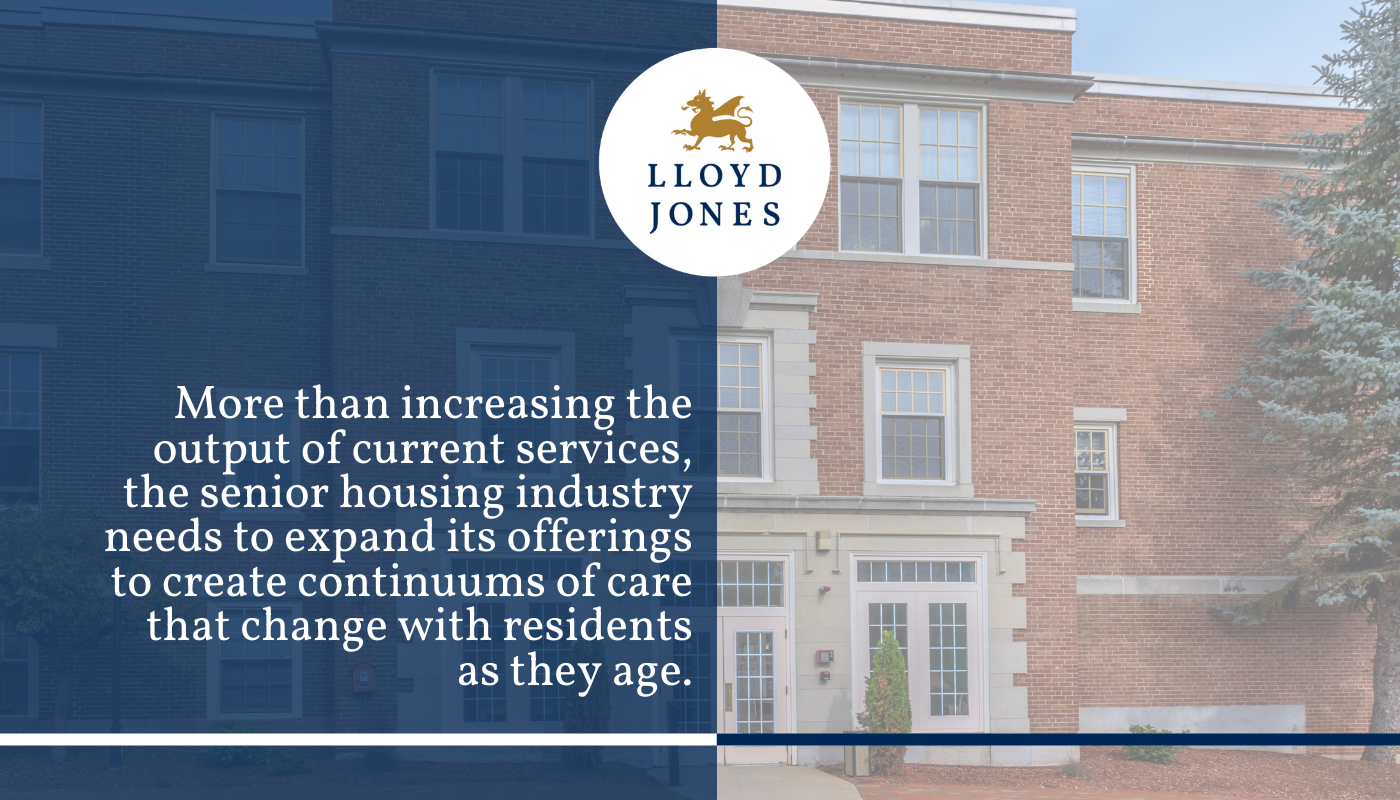
Active Adult
Active-adult communities make it possible for younger, healthier seniors to get away from the trappings of homeownership and the maintenance it requires.
These communities focus on resort-style amenities with swimming pools, gyms, walking trails, and activities that promote health and well-being. Further, active adult communities provide a network of peers with shared life experiences to create a healthy social life.
In some cases, the community may partner with a third-party meal provider, or personal care services, or even pharmacies, to make these services available to the residents. With these choices, residents can remain independent longer.
Independent Living
Independent living caters to adults who enjoy an active lifestyle and abundant services like housekeeping, laundry, meals, and transportation.
In some instances, independent-living communities can arrange for personal services like bathing and dressing to help a resident age in place without leaving the comfort of the familiar community.
Assisted Living
Assisted-living communities start dealing with the greater health and wellness challenges that emerge as residents get older. These facilities offer assistance with activities of daily living, such as bathing, dressing, and medication management.
Residents are carefully monitored by staff to be sure their needs are met.
Memory Care
Memory care helps seniors who experience memory loss, dementia, or Alzheimer’s disease by providing intensive supervision to ensure they remain well-nourished and socially active. There are also growing numbers of facilities that offer programs like the Montessori memory care, which eases the difficulties for the memory-challenged by providing prompts and cues to enhance their understanding of their experience and their surroundings.
Memory-care communities provide services and facilities that ensure families can stay involved with their loved ones and actively participate in the community.
How Technology and Digital Healthcare Offerings Will Be Utilized To Improve Senior Housing
Senior housing is an industry in which many emerging technologies will become interconnected to provide a superior level of care. Just as the introduction of Wi-Fi quickly became a crucial part of the technological infrastructure of senior housing, telehealth and a deeper connection to local hospital networks will become standard as well.
The future will have senior-housing facilities connected to or even partnered with local and adjacent hospitals. With these connections, it will be possible to provide unmatched follow-up care to community residents after being discharged from a hospital.
Nurses will be able to conduct follow-up visits with patients after they’ve returned to their residences, instantly communicating patients’ vitals to the attending physician.
This efficient and convenient treatment method, along with relaxed insurer and provider restrictions surrounding telehealth appointments, will limit the number of unnecessary inpatient admissions to hospitals, improve the care experience, and improve health outcomes for residents of senior housing communities.
Further, services like physical rehab and behavioral health that would typically require off-site appointments will be on-site through partnerships with local healthcare systems.
Related: Innovative Senior Housing Operators Help Residents Age in Place Through Technology
Smaller Cities and Towns Will Take the Lead With Senior Housing
Beyond raw numbers, this can be visualized on a national map showing communities where citizens aged 50 and older made up more than half of the population. This data indicates that senior care needs and opportunities are by no means limited to major metropolitan areas.

The expansion of technology coordinated with smart property acquisitions and partnerships with healthcare systems will make it possible for seniors to access appropriate housing and necessary services, wherever they choose to live.
Creative, Innovative Models in Senior Housing Will Increase
The rate of innovation in senior housing must increase, as creative solutions will be required to adequately deliver services to a growing market. By 2030, every existing senior-housing unit is predicted to be occupied, with millions still seeking facilities to provide needed care.
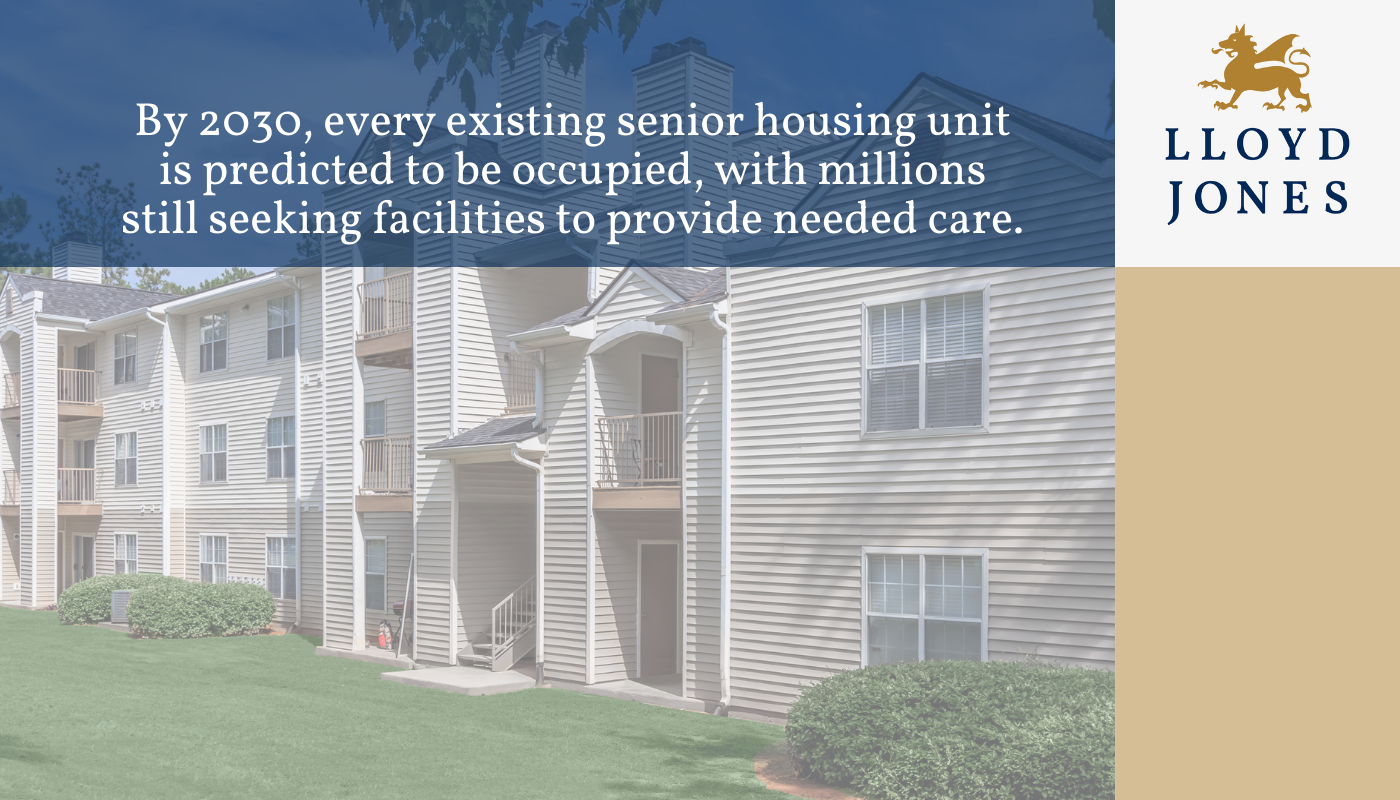
What exactly this will look like remains to be seen, but smart technologies, eco-friendly designs, and increased synergy of currently unconnected systems are sure to be required to deliver the necessary levels of care at a price point that satisfies both residents and investors.
Related: 3 ways to add value in multifamily real estate
Conclusion
Every bit of demographic and construction data points to a future in which senior housing takes a greater role in baby boomers’ social structure and healthcare systems- whether by choice or necessity.The possibilities for this industry, and the lifestyle and care it will provide, should be encouraging to all parties interested in investing in this asset class.
Contact us to receive more information on how Lloyd Jones can help you manage and enhance your senior living real estate investment.
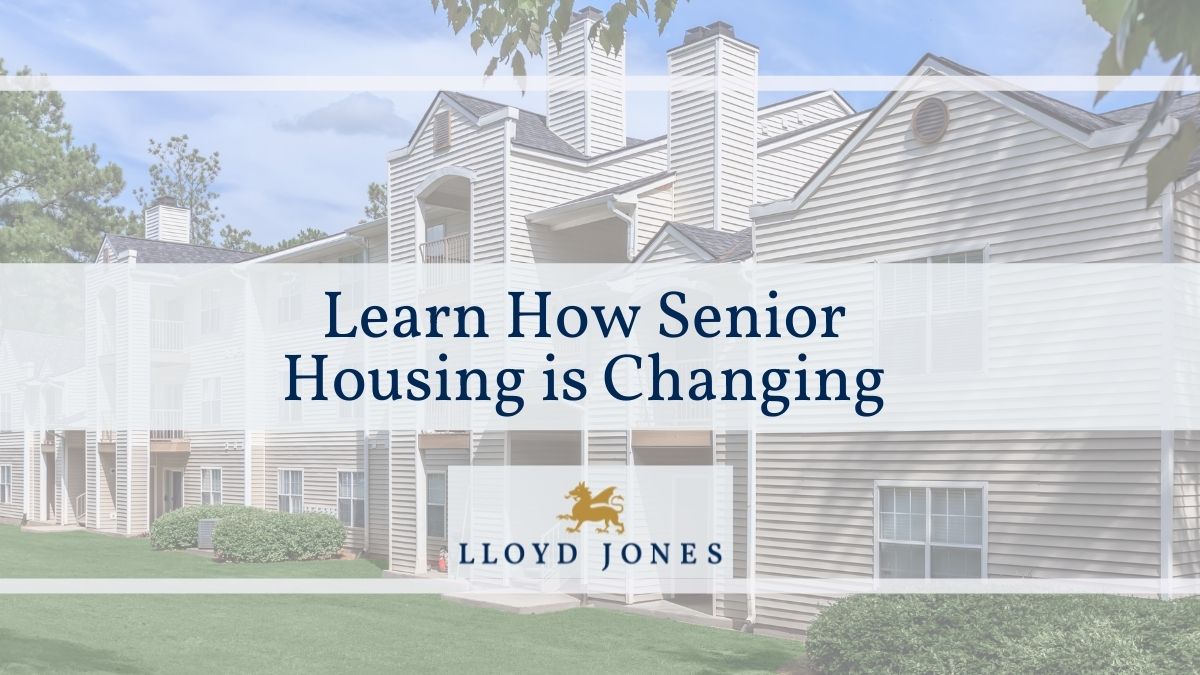
 Source:
Source: 
